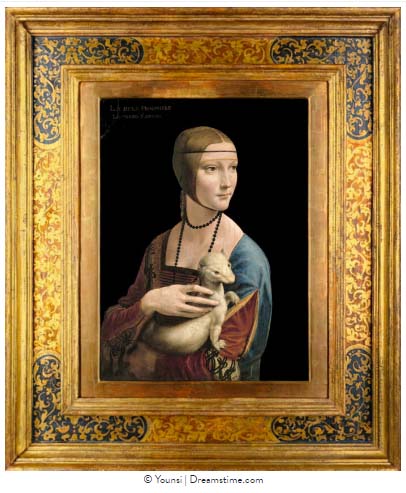By Sharon King Hoge in Global Traveler
Jun 18, 2024
© BRZOZOWSKIPAWELL | DREAMSTIME.COM
A stop in Krakow would not be complete without a visit to the Lady with an Ermine, a Leonardo da Vinci masterpiece, said to be second only to the Mona Lisa. One of four extant Da Vinci portraits, it depicts a young woman, mistress of Ludovico Sforza, embracing an outsize ermine thought to be a reference to Ludovico’s nickname “the white ermine.” The national treasure is a highlight of the significant collection in the city’s Czartoryski Museum, the country’s oldest, comprising three historical buildings: a 19th-century monastery, the 16th-century Municipal Arsenal and the neo-Gothic Palace built in the 19th century for the prominent noble Czartoryski family whose ancestor, Princess Izabela, founded the museum in 1796.
Surrounding the museum, Krakow’s Old Town, Stare Miasto, centers on the largest town square in Europe, Rynek Glówny, one of the first heritage sites designated by UNESCO. The moat outside the original 2-mile-long defensive wall was converted to a green park enclosing the old administrative district dating to the 13th century.
© Younsi | Dreamstime.com
 Bisected by the Royal Road, the coronation route of Polish kings, Old Town remains a bustling area with more than 6,000 historical sites and picturesque buildings housing restaurants, gift shops, pubs and cafés. Horse-drawn carriages take sightseers past Town Hall Tower; Florian Gate; more than a dozen architecturally significant churches; two theaters; and a profusion of monuments and statues, including a tribute to Polish astronomer Nicholas Copernicus, who postulated Earth’s rotation around the sun.
Bisected by the Royal Road, the coronation route of Polish kings, Old Town remains a bustling area with more than 6,000 historical sites and picturesque buildings housing restaurants, gift shops, pubs and cafés. Horse-drawn carriages take sightseers past Town Hall Tower; Florian Gate; more than a dozen architecturally significant churches; two theaters; and a profusion of monuments and statues, including a tribute to Polish astronomer Nicholas Copernicus, who postulated Earth’s rotation around the sun.
Outdoor vendors sell flowers and obwarzaneki krakowskie, twisted, ring-shaped pretzels which are emblems of the city. Find pierogi dumplings, beetroot Krakow borscht, kielbasa sausage and other traditional foods at Wierzynek Restaurant and other pubs and cafés set up in historical tenements and medieval cellars featuring ancient timbers and vaulted ceilings.
In this district rich with local lore, legend explains plentiful pigeons crowding the square are knights transformed by an enchantress, and on the hour they scatter as a trumpeter high in St. Mary’s tower proclaims the time with the five-note hejnal mariacki Polish bugle call.
